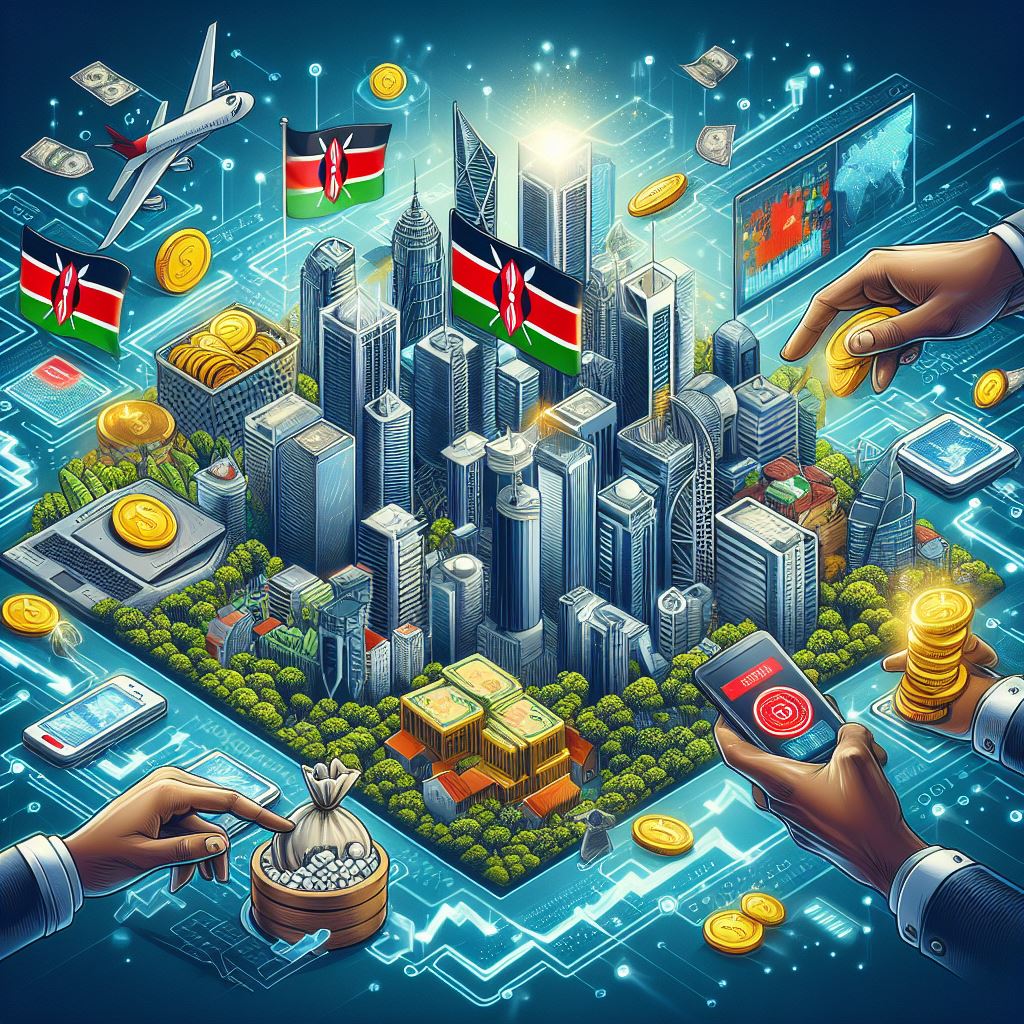5G networks are the future for global connectivity and connectivity which must be faster and better than 4G or even LTE;5G’s beclouded revolution of almost all industries;Aid in the fighting of the digital divide;Boost economies of almost all nations;Industries to embrace the 5G connectivity such as healthcare, transportation, and agriculture among others...
The Future of 5G Networks and Their Impact on Global Connectivity
Introduction
The presentation of 5G systems is balanced to revolutionize how we interface with one another, get to data, and associated with the world around us. As the fifth era of versatile innovation, 5G is anticipated to bring phenomenal speed, lower inactivity, and extended capacity for systems universally. This following step in portable broadcast communications guarantees to convert businesses, cities, and indeed individual ways of life. By giving high-speed web get to and encouraging real-time communication between gadgets, 5G will not as it was affecting our communication but will be a catalyst for advancements over different segments such as healthcare, transportation, excitement, and fabricating.
This article investigates the longer term of 5G systems and their transformative effect on worldwide network, digging into the potential benefits, challenges, and broader suggestions for society as we enter this unused period of network.
The Key Features of 5G Technology
Mobile technologies also face future possibilities with 5G signaling improvement and more efficiency than its predecessors. Although 4G networks have augmented internet connectivity 5G promises to offer a quantum increase in capabilities further than those achievable by means of 4G. Here are the key features that make 5G a revolutionary advancement:
1.Faster Speeds: 5G networks will be reportedly ten times faster than the 4G networks with a maximum of 10 Gbps data downloading speed. This increase in speed will enhance the browsing downloads, and streaming services or with high definition or 4K content.
2.Low Latency: Latency is the amount of time between issuing a command and getting a response of some kind. Latency has been projected to reduce seriously and from 30-50 milliseconds in the present 4G networks to up to 1 millisecond on the 5G networks. This low latency will be important for applications that need real time communications such as autonomous car driving and telemedicine.
3.Enhanced Capacity: Compared to the previous generations, 5G networks will need to support a greater number of connected devices putting it as a preferred solution for the IoT domain. This particularly enables vast numbers of devices services extend to in one place to result in smart cities, logistics optimization and connectivity within regions where social networks were previously out of reach.
4.Network Slicing: This feature affords the possibility to create several virtual networks on one physical network. Each slice can be designed fulfilling the requirements of specific applications like ultra-reliable latency-sensitive autonomous car applications or smart healthcare applications requiring high bandwidth.
Global Connectivity and the Digital Divide
The most revolutionary effect of 5G is it will solve the digital divide problem across the world. While most of the developed countries are already enjoying the features of 4G and other better broadband services, a significant population of the total global population still doesn’t enjoy proper internet connectivity. ITU, stating that, 3 billion plus individuals are devoid of internet connection throughout the globe.
5G networks have the possibility to fill this gap ensure internet coverage in remote and rural areas. While 5G networks build, they are to encourage fast Internet connections where broadband networks are costly to build or are near impossible to implement. It could unlock economic prospects for unconnected communities, promote global economic, education and healthcare missions, 5G is also a key enabler to satellite internet services, hence extending internet accessibility to out of reach areas.
5G in Healthcare: A New Era of Telemedicine
They noted that the healthcare sector has a lot to benefit from the adoption of adopting 5G technology. Thanks to its low latency and high data rate 5G can become the enabler of new forms of telemedicine, remote surgery, and patient care. Telemedicine has already been used to help deliver proper care to patients in underserved or rural areas, and 5G will further extend the technology’s use in real-time video consultations with specialists, remote diagnostic, and even remote surgeries.
As an example, operations may be conducted to patients through robots controlled online by surgeons using 5G networks from thousands of miles away. With low latency, it will be possible to achieve surgical precision in treatments and make healthcare more available to everyone around the world while with wearables, people’s health can be constantly monitored in real time and instantaneous notice to the healthcare practitioners provided once an abnormality is detected.
5G and the Future of Autonomous Vehicles
Another industry set to advantage from 5G innovation is the car segment, particularly with respect to independent vehicles. Independent vehicles (AVs) require consistent communication between the car, its environment, and the foundation around it. 5G's moo inactivity and tall information throughput make it the perfect innovation for empowering vehicle-to-vehicle (V2V) and vehicle-to-infrastructure (V2I) communication.
By empowering AVs to handle information quicker, 5G will offer assistance move forward the security and productivity of independent driving. Real-time information transmission will permit vehicles to communicate with activity signals, other cars, and indeed people on foot, decreasing mishaps and progressing activity stream. 5G will moreover permit vehicles to accumulate and analyze information from their environment more proficiently, progressing their decision-making capabilities.
Economic and Industrial Growth: Smart Cities and IoT
Perhaps one of the more overriding economic advantages of 5G will be IoT devices The wider use of IoT devices is down to 5G. Given that 5G is likely to support a greater number of IOT devices, the manufacturing industry as well as the agricultural industry among others will implement more of IOT devices. The manufacturing industry will leverage 5G networks to link machines, robots, smart sensors and interfaces in factories and optimize automation processes, cut wastage, and optimize the supply chain.
Telecommunications are also worked up for smart cities to be powered by 5G. As for transport operation, emergency service response, waste collection, energy usage and many other aspects of urban life will be supported by intelligent control systems using 5G networks. Potential 5G system solutions include smart traffic lights, proactive infrastructures’ maintenance, and energy-efficient grids in cities.
In agriculture, IoT and 5G combined create the possibility for a new generation of crops monitoring and management. Because of the connected sensors and drones’ farmers are able to obtain the high-quality data on soil conditions, watering and growth of the crops, fertility and pest infestation thus being able to adjust watering, fertigation and pest control in real time.
Challenges and Risks of 5G Implementation
However, there are several issues that need to be addressed for 5G to widely deploy all the opportunities that are in it. The first issue relates to the roll out of the 5G networks, which is notably the fact that 5G needs a higher number of Small Cells/ Base Stations for accessibility especially in the congested areas. The investment required to put up this infrastructure is very expensive and can be very challenging to meet for developing countries or small players in the telecom industry.
A second one is the availability of the spectrum. How Useful is 5G? The deployment of 5G requires the use of some frequencies of radio waves some of which are being used hence the need for sharing. Communications providers catering for 5G will require more spectrum, and this will require negotiations between governments/regulatory authorities and service providers and this will take some time because of legal formalities.
Privacy and security have also been one of the greatest considerations. With the connection of more devices through 5G, more and more devices become targets for cyber criminals and data breaches become frequent. The 5G networks will have to be designed with good security in mind so that, user data can be well protected.
The Future of 5G and Beyond
Looking past 5G, the advancement of 6G systems is as of now on the skyline. Whereas 5G is anticipated to rule the broadcast communications scene for another decade, the move to 6G will encourage quicken worldwide network. 6G systems will likely offer indeed quicker speeds, more noteworthy capacity, and more progressed highlights, counting upgraded manufactured insights capabilities, holographic communication, and indeed more productive utilize of the electromagnetic range.
The proceeded advancement of portable systems will shape not as it were how we communicate but moreover how businesses work and economies work. The interconnected world of long-term will be powered by progressions in broadcast communications, giving perpetual conceivable outcomes for advancement.
Conclusion
Long-term of 5G systems holds gigantic guarantee for worldwide network, bringing the world closer together and enabling breakthroughs over a wide extend of businesses. With quicker speeds, lower idleness, and higher capacity, 5G will make strides everything from healthcare and transportation to fabricating and horticulture. It'll cultivate financial development, drive innovative development, and open up openings for people and communities that were already underserved.
In any case, the rollout of 5G too comes with challenges that must be tended to, counting framework costs, range assignment, and security concerns. By overcoming these deterrents, we can completely realize the potential of 5G and clear the way for indeed more progressed systems within the future. As 5G gets to be an omnipresent portion of our computerized lives, the world will proceed to involvement a principal move in how we communicate, interface, and connected with the environment around us.


























